Friday found us stepping off the aeroplane onto Isla San Cristobal (formerly Chatham Island) in the Galapagos like a couple of excited children. Here we are in the most important zoological area of the world in the bi-centenary of the birth of Charles Darwin. We are ready for further education and enlightenment. We want to enjoy the sights of this special place.
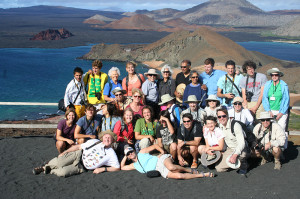 We are on a boat called La Pinta that is reassuringly big while also only catering for 45 passengers. We had expected an eclectic mix of fellow travellers aboard the boat so we were taken aback when it transpired that every single one of them was from Stanford University, California, U S of A! There were students studying evolution, sophomores (whatever they are), alumni, doctors and the Professor in charge of the rabble who is, we are told, a world authority on Darwin and is making his 30th visit to the Islands. With this lot and the lectures we get every night, I don’t think we are going to have to worry much about being educated on this trip!
We are on a boat called La Pinta that is reassuringly big while also only catering for 45 passengers. We had expected an eclectic mix of fellow travellers aboard the boat so we were taken aback when it transpired that every single one of them was from Stanford University, California, U S of A! There were students studying evolution, sophomores (whatever they are), alumni, doctors and the Professor in charge of the rabble who is, we are told, a world authority on Darwin and is making his 30th visit to the Islands. With this lot and the lectures we get every night, I don’t think we are going to have to worry much about being educated on this trip!
The daily programme on board can be described as aggressive. The day begins with a wake-up call on the boat’s speaker system – it’s like being in a holiday camp ‘hi-de-hi’ (good morning campers) style. 15 minutes later is a further announcement in case you missed the first one. Thereafter, whenever an activity finishes, another is about to begin and none of them involve lazing around. There is precious little time for sloth and indolence.
Each evening, before dinner, one or two of the students gives a talk on an aspect of the Islands. It might be the finches, turtles, flamingos or lizards and how they relate to Darwin’s theory of evolution. Professor Bill acts as ringmaster for all these talks as he is grading the students for their course. He also gives an enthusiastic and interesting short lecture describing how Darwin began to piece the evidence together for his theory.
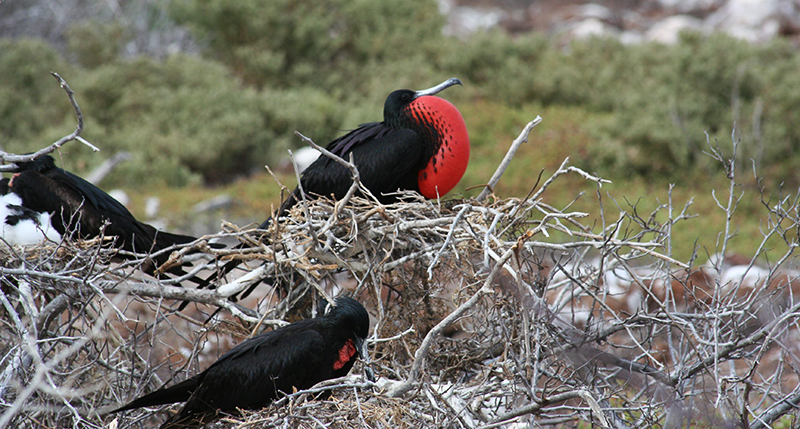 Day one begins with a 6.ooam wake up. We are leaving the boat at 6.30 for a 2 hour walk on North Seymour Island, a small satellite of Santa Cruz Island. All the animals are very tame, ignoring us as we wander within touching distance. There are sea lions scattered all around the shoreline asleep. Frigate birds arguing, male frigate birds trying to attract a mate by blowing up a red pouch in its throat and making appropriate calls whenever a female comes close. We walk next to blue footed boobies and their young all of whom watch us without great interest. Land and sea lizards drag themselves about robot style as if their left and right limbs are joined by a splint.
Day one begins with a 6.ooam wake up. We are leaving the boat at 6.30 for a 2 hour walk on North Seymour Island, a small satellite of Santa Cruz Island. All the animals are very tame, ignoring us as we wander within touching distance. There are sea lions scattered all around the shoreline asleep. Frigate birds arguing, male frigate birds trying to attract a mate by blowing up a red pouch in its throat and making appropriate calls whenever a female comes close. We walk next to blue footed boobies and their young all of whom watch us without great interest. Land and sea lizards drag themselves about robot style as if their left and right limbs are joined by a splint.
The island is very rocky. Under every step there are lumps of volcanic rock, deep red in colour, that have had their iron ore washed out by rain. Everything is very arid as it is the middle of the dry season and all the trees (which are no more than a couple of metres high) are dormant, without leaf, and look dead to the untrained eye.
The walk finishes close to a seal that has given birth in the early hours that morning. The birthing spot is clearly visible close by and the new born is clean and fluffy asleep next to mum. Mum looks knackered, no doubt depressed at the thought of rearing another nuisance.
After breakfast, we are given a talk on water safety followed by the distribution of wetsuits and snorkelling gear. Although the sun is not shining and it is not cold, somehow, the thought of snorkelling is not very appealing. Nonetheless, it would be gutless to chicken out, especially in front of the Colonials, so we decided to give it a go.
As luck would have it, the sea temperature was 23c and the expected sharp intake of breath as we hit the water did not happen. I suspect that after 10 days of cold or tepid showers we were conditioned perfectly for sea temperatures around here. Our diving experience proved useful in helping Stanford alumni, some of whom are in their 70s; work out which way up a snorkel goes.
The highlight of the dive came about half way through when, while watching a puffer fish hover around a rock, Debbie gave me a thump and pointed behind. There, in the slight gloom moving away from us was an enormous Manta ray. We swum after it and I estimated that its wing span, tip to tip based on how many times my body length would fit across it, must have been 3 – 4 metres. We have never seen a ray anything like this size; in fact, we never appreciated that they could be so big. Unfortunately, our encounter did not last long because the lazy motion of the Ray’s wings propelled it away from us despite our frantic thrashing of flippers.
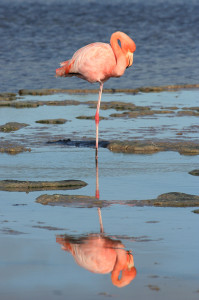 We rushed from our snorkel to lunch. We then rushed from lunch to a yoga class and then rushed to the boats for another two hour walk that concluded as the sun went down. The walk took us past pretty flamingos (what are they doing here I thought), past burrowing land lizards and through another dry forest whose trees were much taller than those this morning. There were a lot of cacti that had adapted to prevent themselves from being eaten by lizards and there were mocking birds and finches. The latter two types of bird being central to Darwin’s evidence behind his evolution theory.
We rushed from our snorkel to lunch. We then rushed from lunch to a yoga class and then rushed to the boats for another two hour walk that concluded as the sun went down. The walk took us past pretty flamingos (what are they doing here I thought), past burrowing land lizards and through another dry forest whose trees were much taller than those this morning. There were a lot of cacti that had adapted to prevent themselves from being eaten by lizards and there were mocking birds and finches. The latter two types of bird being central to Darwin’s evidence behind his evolution theory.
After dinner, while the kids were getting ready for a rave in the bar area, we went to the stern to look at the stars and watch sharks and sea lions circle the ship.

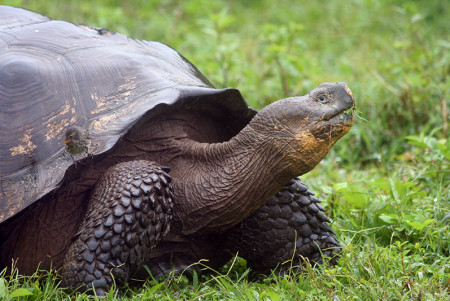
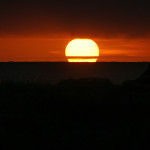
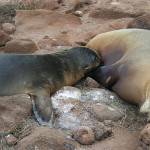
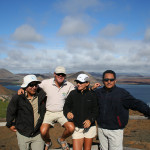
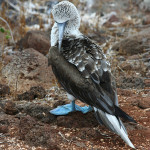
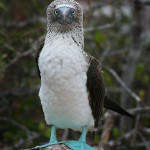
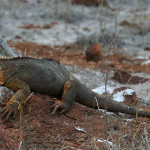
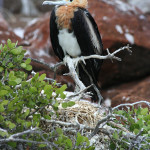
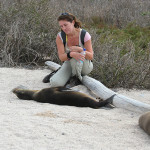
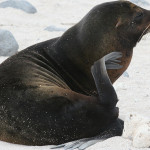
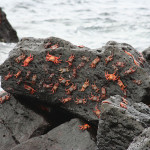
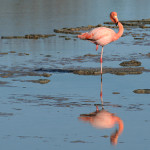
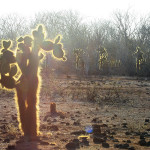
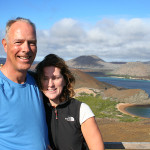
No comments yet.